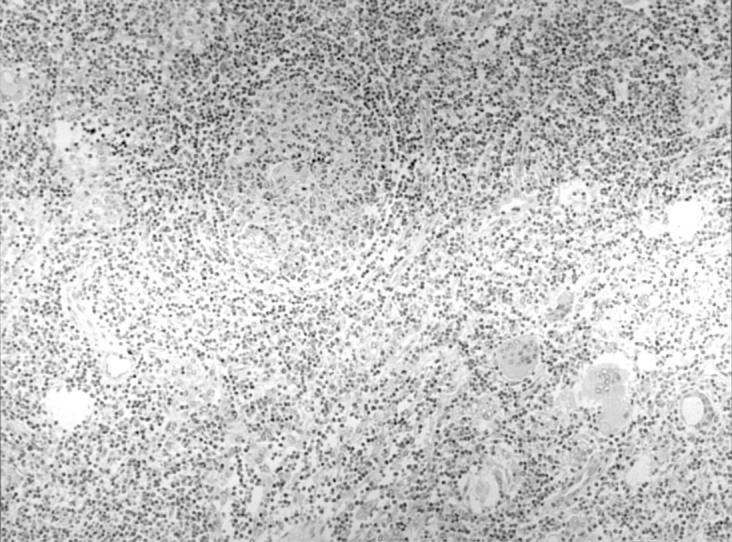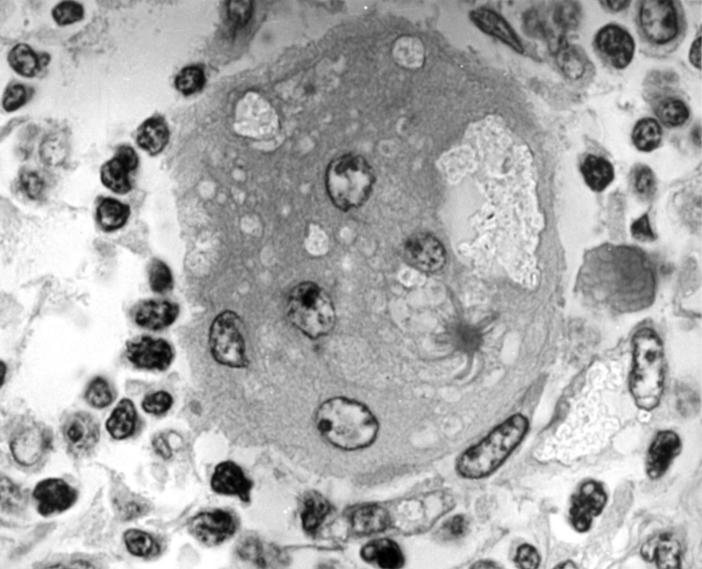Abstract
With lymph node enlargement, the possibility of a malignant process such as metastatic carcinoma or lymphoma needs to be excluded. This report describes a 47 year old woman with inguinal lymph node enlargement initially suspicious for lymphoma. Fine needle aspiration findings favoured reactive hyperplasia, but a malignant process could not be excluded. The final histological diagnosis was a foreign body granulomatous inflammatory response as a result of regionally disseminated silicone particles from an over looked metatarsophalangeal joint prosthesis. Because of the large number of joint prostheses world wide, it should be kept in mind that migration of wear particles can create granulomatous inflammation and node enlargement.
Key Words: lymphadenopathy • silicone • prosthesis
Full Text
The Full Text of this article is available as a PDF (121.8 KB).

Figure 1 Lymph node with germinal centre surrounded by sinuses filled with numerous multinucleated foreign body giant cells containing refractile silicone particles (haematoxylin erythrosin saffron stain; magnification, x100).
Figure 2 Multinucleated giant cells containing intracytoplasmic asteroid bodies and refractile silicone particles (haematoxylin erythrosin saffron stain; magnification, x1000).



